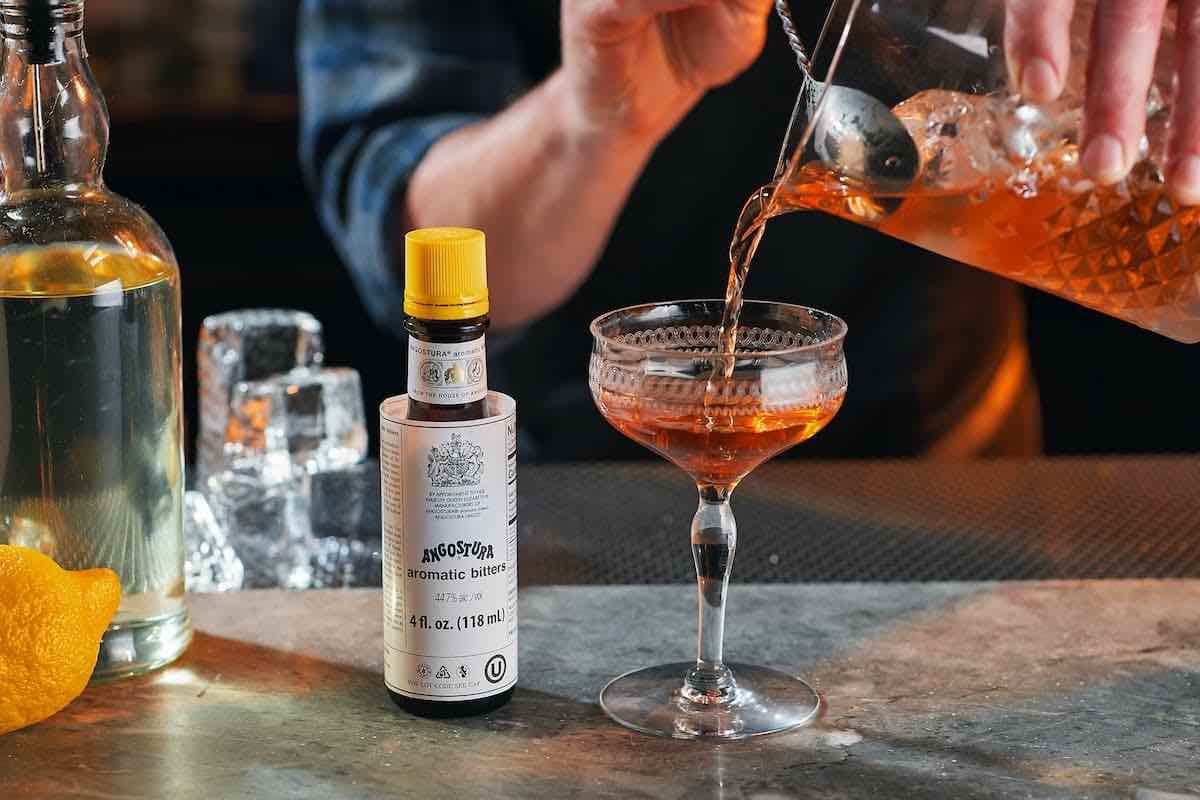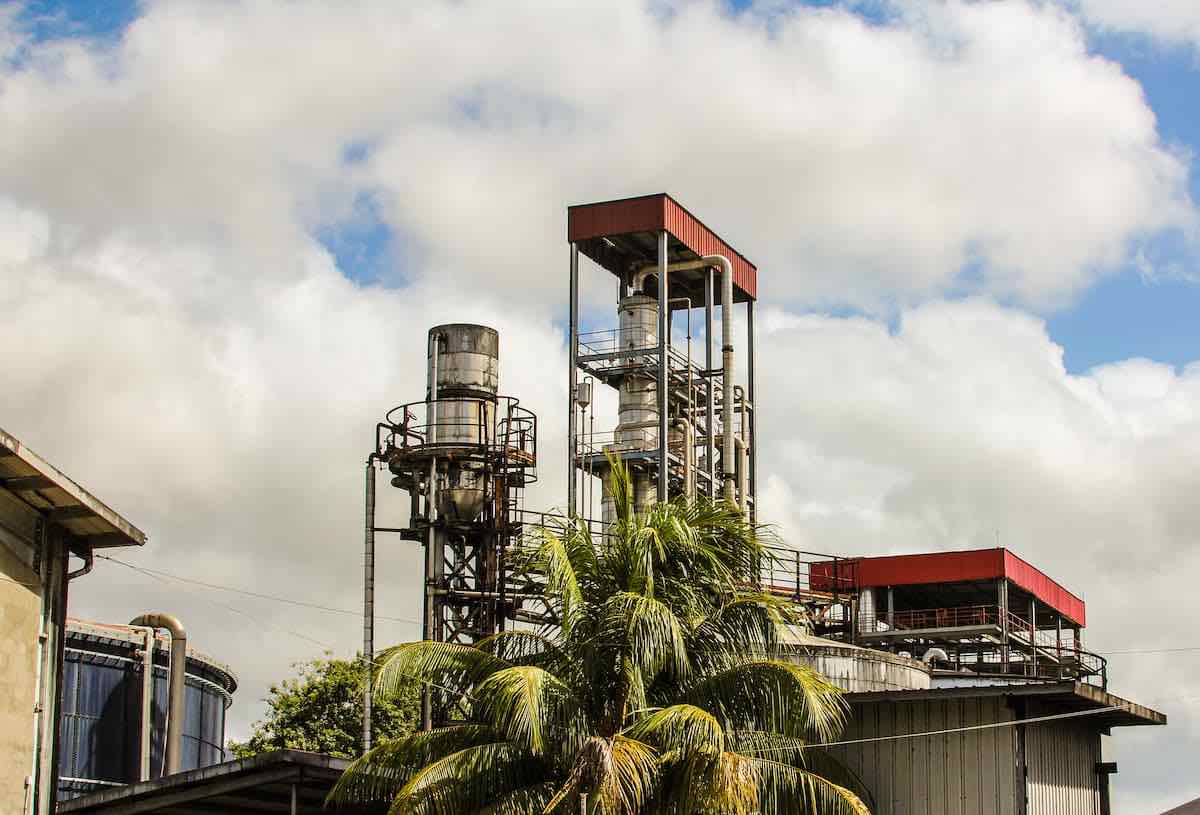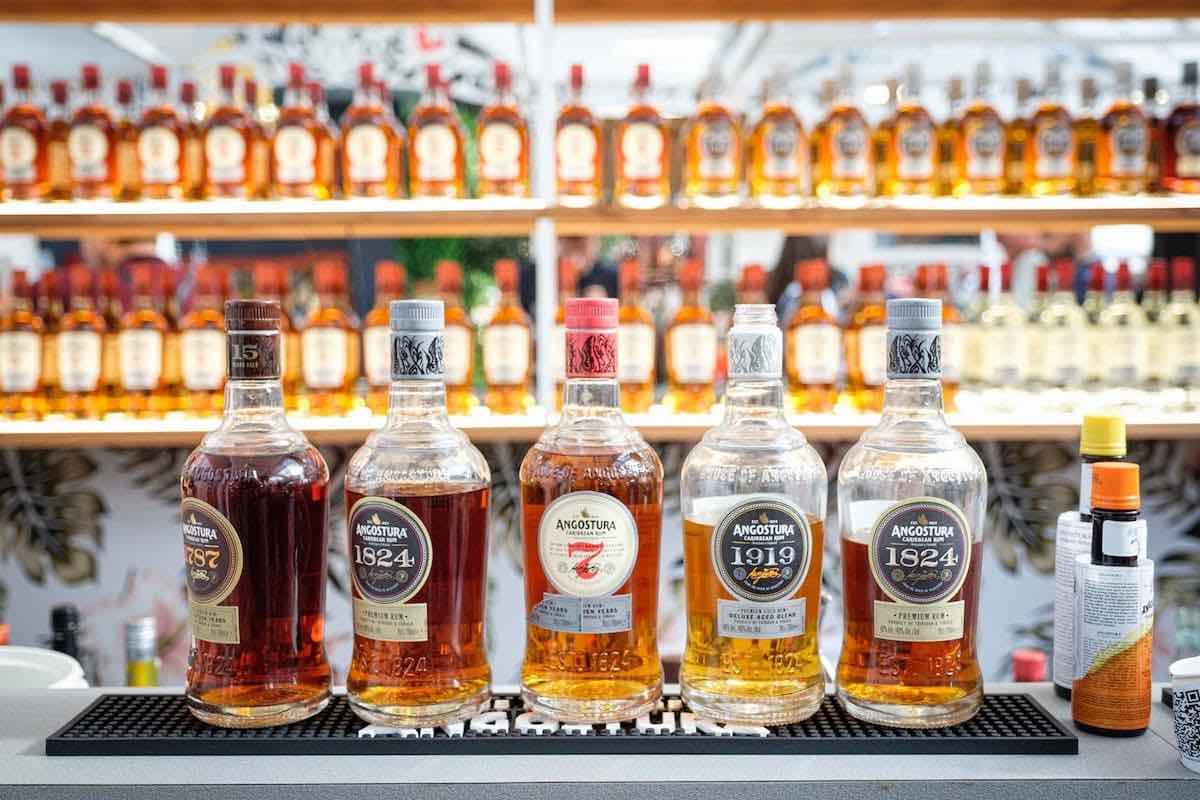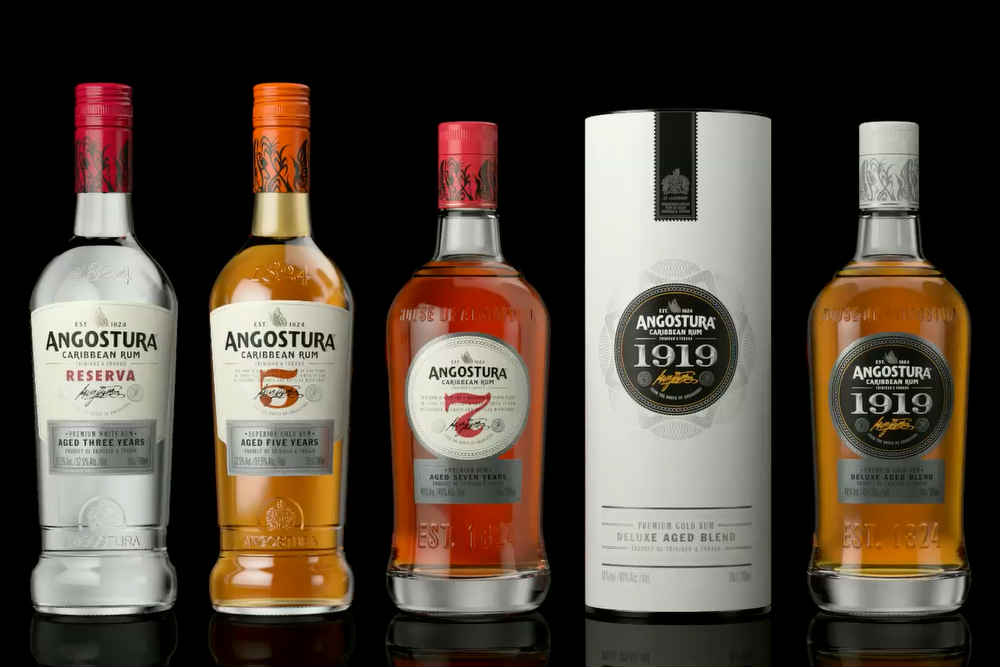Go to any bar and look for a brown bottle with a white paper “collar” around the neck. You’ll undoubtedly find it—Angostura bitters are a ubiquitous bar ingredient around the globe.
From classic recipes like the Manhattan to modern Tiki staples, Angostura bitters are essential. An Old-Fashioned without bitters is just diluted whiskey with sugar, while the mouth-puckering Trinidad Sour uses Angostura bitters as its base spirit. Sure, there are more bitters clamoring for your attention these days than Instagram influencers, but Angostura commanded the lion’s share of the bitters market long before any of us were born.
While their bitters have been famous for over a century, it’s far less known that Angostura is among the largest rum makers in the world. On a recent trip to Trinidad I got the full scoop on both.
Bitter Times
Although Angostura bitters are an intense source of pride for the island nation of Trinidad, they originated a short boat ride away in Venezuela, on South America’s northern coast. There, in the early 1820s, Dr. Johann Siegert was a surgeon in Simon Bolivar’s war for Venezuelan independence from the Spanish crown. Stomach ailments were a common problem then, and Siegert developed a medicinal tincture to help sufferers.
Interestingly, the Angostura in the name refers not to Angostura tree bark, but rather to the town of Angostura (now Ciudad Bolívar) where Siegert developed them. His tinctures soon found non-medicinal use as flavor enhancements to carbonated water, gin, and other libations, so Siegert pivoted to bitters making.

House of Angostura Facebook
In 1875, Siegert’s sons moved the company’s operations to Trinidad a few miles to the north. Over the following decades, both cocktails and the Angostura bitters used to make them became enormously popular. By the late 1800s, Angostura had many competitors also selling “Angostura bitters.” The company’s vigorous trademark defense took decades, but eventually established it as the only true product with that name.
Part of the company’s success over would-be competitors is its secret recipe. Of course, Trinidad rum is the primary ingredient in the bitters; and we’ll come back to that momentarily. However, the dozens of botanicals like orange peel are what create the unique flavor profile. Only a very small handful of company officials know the full recipe.
The botanicals arrive in Trinidad in colored bags with no indications of the ingredients within. Per Trinidad law, these bags are not subject to import inspection, which helps to preserve the secret. The botanicals are steeped for several hours in high-proof Trinidad rum to extract their flavors before they’re filtered out. The resulting liquid is then blended with caramel and sugar and rested for several months before dilution and bottling.
From Rum Customer to Rum Brand
Originally, Angostura purchased rum from island suppliers for its bitters, as well as to age and bottle itself. In the late 1940s, seeking a more consistent and cost-efficient supply, Angostura built its own state-of-the-art rum distillery. This investment proved to be quite successful over the decades.
In the early 1970s, Bacardi purchased part of Angostura’s rum-making subsidiary, Trinidad Distillers Ltd. This investment enabled Angostura to acquire a large island competitor, Fernandes Distillers, some of whose brands live on today. Some Bacardi rum of that era was made at the Angostura distillery.

Matt Pietrek
In late 1990s, Bacardi sold its stake in Angostura, and Angostura became primarily owned by CL Financial, a Trinidad holding company. Angostura’s new corporate parent began an acquisition spree that included high-profile companies including Appleton Estate, Hine Cognac, Belvedere Vodka, and Lawrenceburg Distillers Indiana (now known as MGP Ingredients), the contract whiskey-making colossus.
The 2007 financial crisis brought CL Financial to the brink, and it survived only via Trinidad government intervention. All its spirit companies were sold off, save Angostura. This saga transformed the spirits industry.
Angostura Rum Today
Since first making rum in 1947, Angostura has focused on the style of rum made famous by former Spanish colonies like Cuba and Puerto Rico, e.g. Bacardi, Havana Club, and Don Q. The process involves a quick molasses fermentation, column distillation, and blending light and heavy rums. The heavy rums (~75% ABV) go through a single distillation column, while the lighter rums (~95% ABV) go through additional distillation columns. Less than half of the rum Angostura makes goes to its brands. The remainder is sold to other brands or as bulk rum.
Angostura prides itself on its aging and blending prowess. Nearly all of its rums age on-site in ex-bourbon casks. Angostura’s “international” expressions are aged between three and 15 years. Let’s take a quick look at each:

House of Angostura Facebook
Angostura’s entry level rum is the Reserva, aged for a minimum of three years, then carbon filtered for clarity. Next in the range are the Five Year and Seven Year, aged for five and seven years, respectively. Whereas the Reserva and Five Year contain only light rum, the Seven Year includes light and heavy rums blended before aging.
The upper end of the International lineup is the 1919, 1824, and 1787 releases. Each year refers to important events in company or Trinidad history. The 1824 is aged for at least 12 years, while the 1787 clocks 15 years minimum. I suspect there are even older rums within the 1787, which has a lovely oily heaviness to it.
Finally, and though there are no more bottles for sale, I’d be remiss in not mentioning Angostura Legacy, one of the most expensive rums ever sold. At $25,000 per bottle, it’s made from seven rare rums, each a minimum of 17 years old, and housed in an exquisite crystal decanter. While tasting samples aren’t available on Angostura’s tour, you can gawk at one of the last remaining bottles on display at the Angostura museum near Port of Spain in Trinidad. If you find yourself in Port of Spain, a museum visit is well worth the trip!



